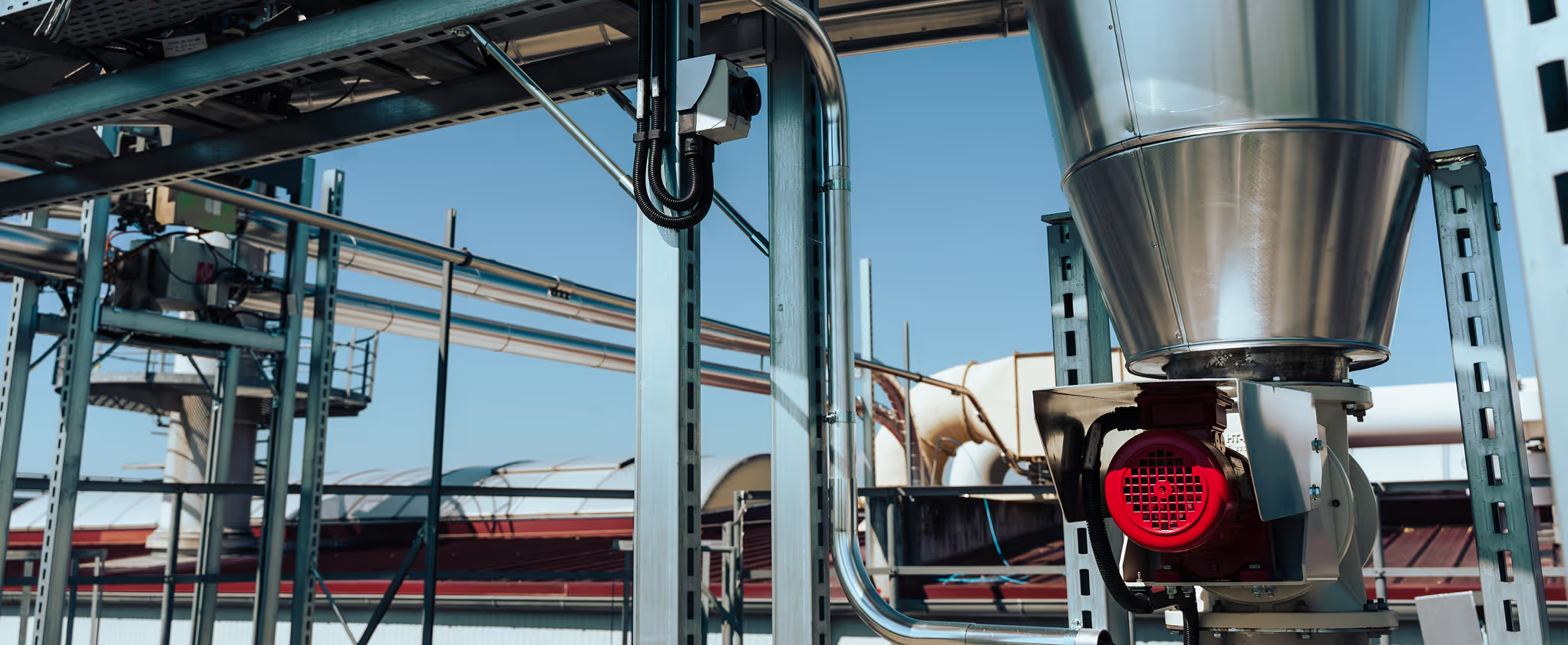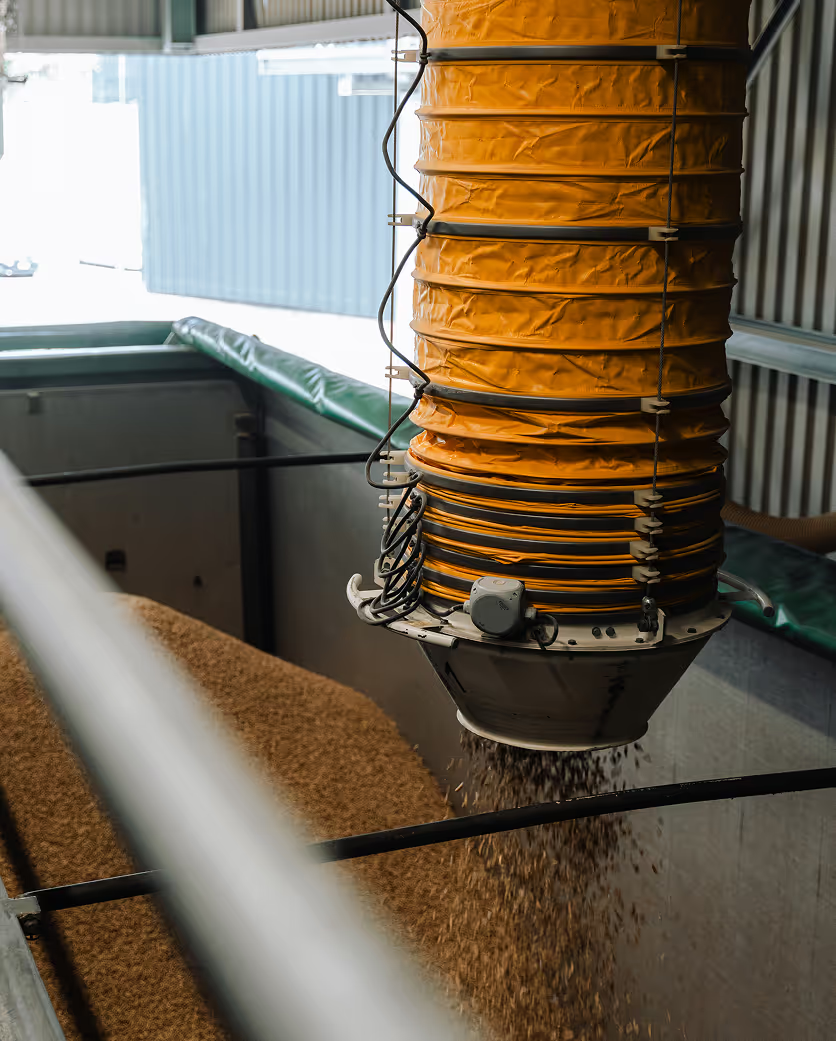Pneumatic conveyor systems
.png)
What defines
us
.svg)
.svg)
.svg)

FAQ
Pneumatic conveying systems transport bulk materials in a continuous flow of air through closed pipelines - without mechanically moving parts in direct contact with the conveyed material. This eliminates the typical mechanical stresses that occur with screw conveyors, bucket elevators or conveyor belts, such as crushing, shearing or frictional forces.
Pneumatic conveying offers considerable advantages, especially for sensitive products such as granulates, tablets, powders or coated particles: The conveyed material is moved in a free-floating or slowly gliding manner, which greatly reduces breakage, abrasion and segregation.
The ability to regulate the air speed allows the system to be precisely customised to the sensitivity of the product. For particularly sensitive goods, it is also possible to work at low pressure and reduced speed in so-called gentle conveying mode.This is exactly where our many years of experience come into play. Over the years, we have designed and continuously developed an enormous number of systems. This guarantees not only gentle product handling, but also energy-efficient operation.
Thanks to our many years of experience in the design and construction of pneumatic transport systems, we are able to design a system that is optimised for your product and your process conditions. This is the fundamental success factor, as only the interplay of the right pressure, conveying volume and drive power can guarantee reliable, efficient and product-friendly operation.
Anyone can support — we do it with brains.
Pneumatic conveyor systems work according to either the pressure or suction principle. The choice of the appropriate method depends on various factors: the material to be conveyed, the system configuration, the ambient conditions and the operational requirements.
In pressure conveying, the bulk material is forced from the feed point into the pipework by overpressure using a blower or compressor. This principle is particularly suitable for longer conveying distances, high throughput rates and abrasion-resistant materials. Pressurised conveying also offers advantages for applications with a central product feed and several removal points. The use of rotary valves or rotary valves for controlled feeding is typical.
However, this system requires more effort in terms of sealing and generates higher flow velocities, which can lead to abrasion or product breakage depending on the product.
In contrast, vacuum conveying uses a vacuum to draw the conveyed goods from one or more extraction points to the target point. This method is ideal for sensitive, dusty or contamination-critical products - for example in the food or pharmaceutical industry. Another advantage is the simple material pick-up, e.g. directly from sacks, containers or open hoppers, without pressure-tight airlocks. Due to the pressure conditions, however, the conveying distances and quantities are limited, and the requirements for the tightness of the pipes and the filter technology are higher.
To summarise, pressure conveying offers advantages in terms of performance and range, while suction conveying scores points when it comes to product protection, hygiene and flexible material intake. In each case, we analyse the specific boundary conditions and design the optimum conveying principle for your individual application.
The performance of pneumatic conveyor systems is limited by several physical and process-related factors. The most important of these include the conveying distance, height differences, material properties and the desired throughput.
As a rule, horizontal conveying distances of up to around 300 metres and vertical conveying heights of up to around 50 metres are economically feasible. Beyond this, energy requirements and wear increase significantly. Pipe wear can become a critical factor, especially with abrasive or very heavy bulk materials.
The flow properties of the conveyed material also play a key role: highly moist, sticky or bridging materials can only be conveyed pneumatically to a limited extent. Particle size can also set limits - very coarse-grained or non-free-flowing products are often unsuitable for pneumatic systems or can only be handled with additional measures (e.g. loosening, pre-dedusting).
In addition, pneumatic systems with capacities > 60 t/h reach their efficiency limits. In this case, it must be carefully checked whether mechanical conveying is not more economical.
In short: Pneumatic conveying is ideal for many applications, but it is not an all-round system. A careful analysis of the general conditions is crucial for a reliable and economical design.
%20(1).png)
Do you have
any further questions?
Do you have any questions about our products or would you like a personal consultation? Contact us — we'll be happy to help.
Customer reviews



Further
offers

.avif)

We are looking forward to your message
Do you have any questions about our products or would you like a personal consultation? Contact us — we'll be happy to help.
.avif)


.svg)


.svg)
.svg)
.svg)

